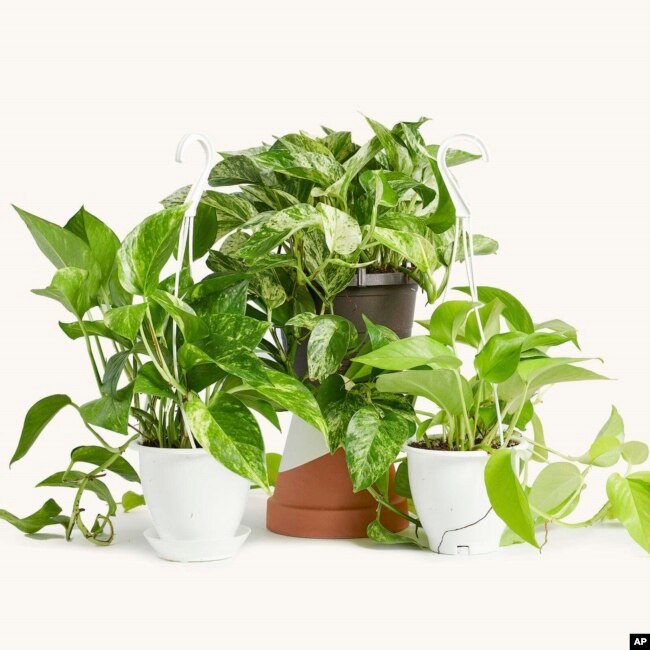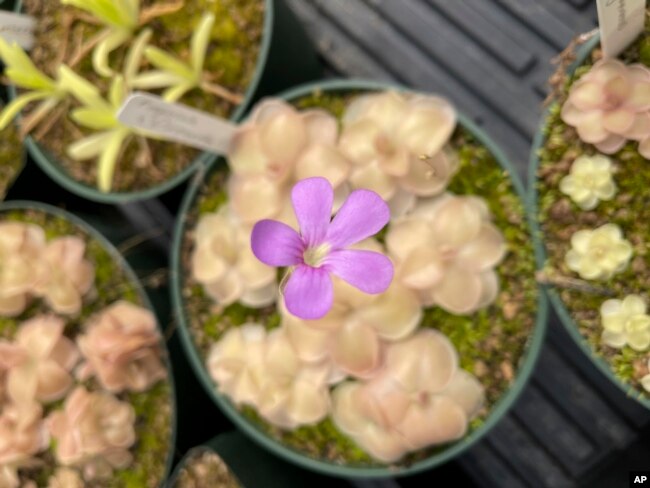From VOA Learning English, this is the Health & Lifestyle report.
When the COVID-19 pandemic hit, many people around the world started spending a lot more time indoors. That’s where many saw room for improvement.
Demand rose sharply for home improvement services and supplies. But people still found ways to make simple changes to improve their home environment — including adding plant life.
Two years into the pandemic, the interest in houseplants is still going strong. Social media is helping to make some plants – houseplant stars!
Plant experts recently talked to the Associated Press about the trends in houseplants: which ones were popular and which ones are becoming more popular.
One loser is the cactus. It has been popular over the last ten years. But now the plant is losing fans. People are now looking for plants that help a home feel warm and loving. The sharp needles of many cactus plants may send a different message.
Popular plants
Steadily growing in popularity over the past few years is monstera deliciosa. It is also called the split-leaf philodendron. (Although some experts say monstera deliciosa is not really a philodendron.)

Another popular plant in the monstera family is the Swiss cheese plant. Swiss cheese has holes in it and so do the leaves of this plant.
Puneet Sabharwal is CEO and co-founder of the Horti houseplant subscription service. He told the AP that, “Looks are what make them popular.” But he added that some plants that are hard to buy also become popular.
In the past, Sabharwal explained, the monsteras were not available in small sizes. And he added they were costly.
So, hobby gardeners shared clippings — small pieces of the plant — with each other. Then they would post the plants on Instagram with the hashtag #MonsteraMonday. This, Sabharwal said, helped to increase the popularity of the plants.
These days those plants are easier to buy. The current monstera trend is fueled by its good looks, social media presence, and ease of care, Sabharwal said. “They (are) hard to kill, and you only need one to add the feel of a jungle to your house.”
Vines
Climbing plants are also popular. Social media sites show images of rooms filled with vines rooted in containers. They spread over furniture, doorways, and other things in the room.
Philodendrons are a desirable climbing plant, as are large hoya and pothos plants. These are all easy to care for.

“The beauty of vining plants is that you can easily take a clipping and make another,” Sabharwal said. “And they do (not) take up a lot of floor space” because they grow vertically, or up and down.
Killer plants
Do you like a little drama with your houseplants? If so, a carnivorous bug-eating plant might for you! They can be difficult to grow, but they are very interesting to talk about.
Damon Collingsworth is co-owner of California Carnivores. It is the largest carnivorous plant store in the U.S. “When we opened in 1989, no one was interested because (the plants) were kind of weird. But,” he said, “weird is desirable now.”
Again, social media may have played a part.
Many TikTok videos show the plants eating bugs. In September of last year, a video showing a jumping spider living in a pitcher plant quickly got 15.8 million views after it was posted to TikTok.
Traditional gardening organizations have also showed respect for these quiet, green killers. Last summer, the yearly BBC Gardeners World Live included a carnivorous plants display for the first time. The event in the British city of Birmingham has been taking place for 30 years.

Collingsworth said his biggest sellers are Cape sundews and butterworts. Both are among the easiest carnivorous plants to grow indoors along a sunny window.
Tropical pitcher plants also are on-trend, but they require more care. Watering them is a balancing act. Collingsworth says their soil should be kept slightly wet but not too wet. And it needs only a short drying period between waterings.
These types of plants require mineral-free water or rainwater. Also they need very little fertilizer because they get nutrients from the insects they eat. However, when the plants are low on live food supply, Collingsworth suggests adding some fertilizer to each pitcher plant’s “mouth.” You can also spray the leaves of other plants with liquid fertilizer once a month.

“They (are) so different from everything else,” he said, “and also really … beautiful.”
Perhaps because of the pandemic, more people need the healing power that nature, even a small plant, can provide. Whatever the reasons, more and more people are bringing nature into their homes.
And that’s the Health & Lifestyle Report. I’m Anna Matteo.
Jessica Damiano wrote this for the Associated Press. Anna Matteo adapted it for VOA Learning English.
TRY THIS QUIZ TO CHECK YOUR UNDERSTANDING.
Quiz – Popular Houseplants for 2022
____________________________________
Words in This Story
trend – n. general direction taken in movement or change
subscription – n. an agreement that you make with a company to get a publication or service regularly and that you usually pay for in advance
hobby – adj. an interest or activity engaged in for pleasure
gardener – n. one who spends time cultivating plants and tending a garden for pleasure or recreation
jungle – n. a thick or tangled growth of tropical plants
carnivorous – adj. feeding on animal flesh or tissue
weird – adj. very unusual
display – n. an arrangement of objects intended to decorate, advertise, entertain, or inform people about something : an event at which something is done or shown to impress or entertain people